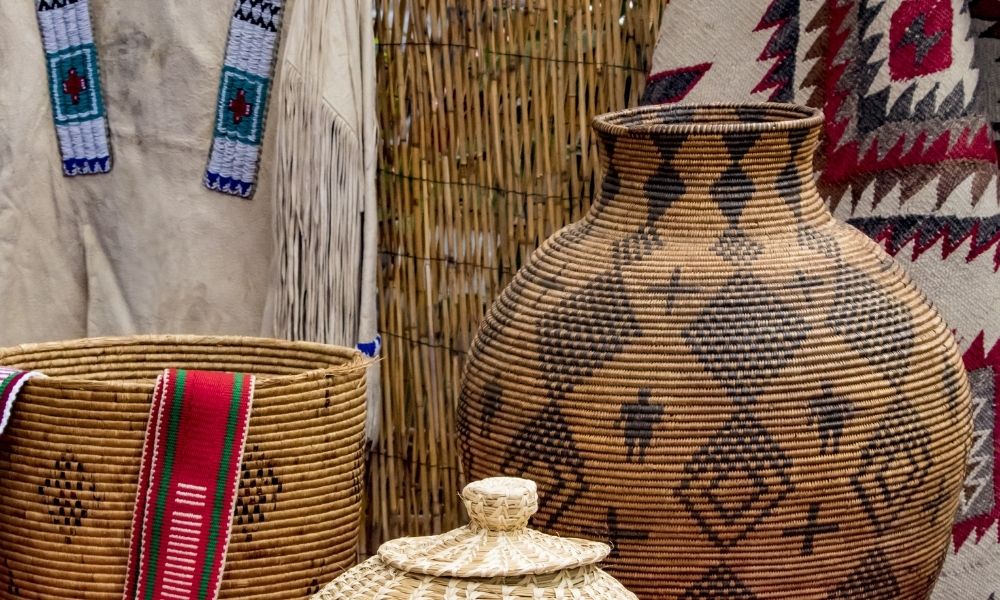Top Authentic Native American Drum Accessories
Native American drums are sac..
 ">
">One simple act changed the entire process of producing, marketing, and selling Native American and Native American-style goods—and for the better. Here’s what to know about the Indian Arts and Crafts Act of 1990.
Jon Kyl, a Republican senator from Arizona, introduced the act in 1989. It passed through the House and Senate with slight amendments the following year, and President George H.W. Bush then signed it into law.
The law extends the powers of the Indian Arts and Crafts Board. It prohibits the misrepresentation of non-Native arts and crafts products, such as woven rugs, jewelry, and pottery, as genuine. To be considered genuine, products need to truthfully state their maker’s heritage and tribal affiliation. The act doesn’t immediately cover individuals with distant Native American heritage. To enroll, a member of one of the Native tribes needs to officially designate them as an artisan. Individuals who falsely claim their products as authentically Native American face fines of up to $250,000, a five-year prison term, or both. If an established business violates the Indian Arts and Crafts Act, it can face civil penalties, prosecution, and harsher fines of up to $1,000,000.
The Indian Arts and Crafts Board is in charge of overseeing and implementing the act. The act affects any arts and crafts products produced after 1935, the year after the Indian Arts and Crafts Board’s founding. Only goods are covered; the law doesn’t extend to the marketing of services.
Another thing to know about the Indian Arts and Crafts Act of 1990 is why it’s important. Non-Native artists regularly copy traditional items. By falsely marketing their products as genuine, they’re taking profit from legitimate artists and appropriating and misrepresenting Native American culture. The act protects artisans who are federally or state-recognized and allows them produce and sell their crafts without concern. It protects buyers, too. Most people who purchase Native American goods do so out of appreciation for the cultural, spiritual, and historical meaning behind them.
The Indian Arts and Crafts Act removes the worry of accidentally purchasing inauthentic products. As long as you carefully check the listing, you’re guaranteed a genuine Native American-made item.
Inauthentic artists can only sell their goods with the word “style” attached. If you find a product that’s labeled as “Native American-style” or “Indian-style,” it’s unlikely to be genuine. Instead, look for products that lack those denominations and that clearly list the artist’s tribal affiliation.
If you’re looking for authentic, high-quality Native American drum beaters, drum stands, and other drum accessories, Tachini Drums can help. Check out our inventory and let our products connect you to the heartbeat of Mother Earth.